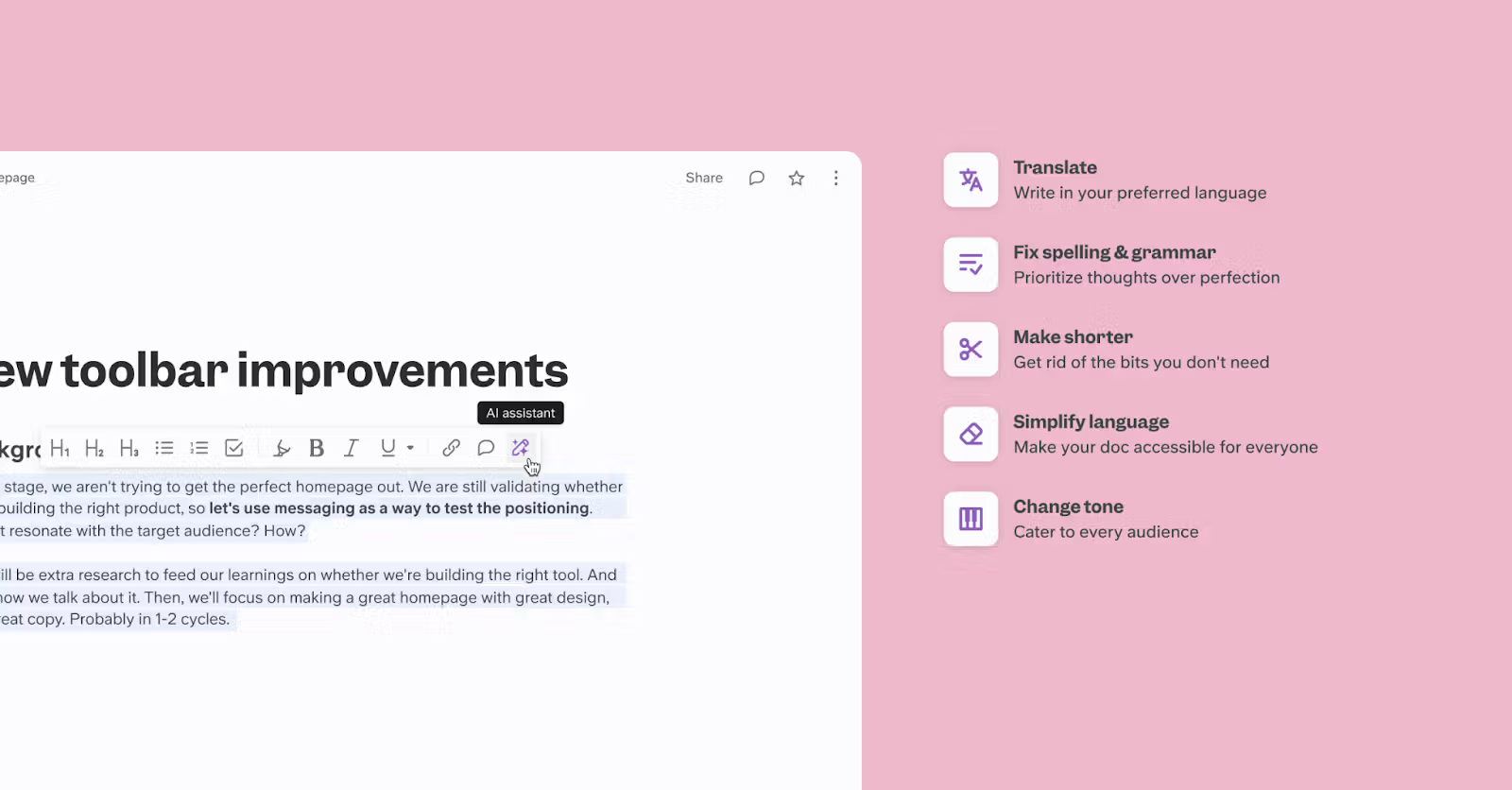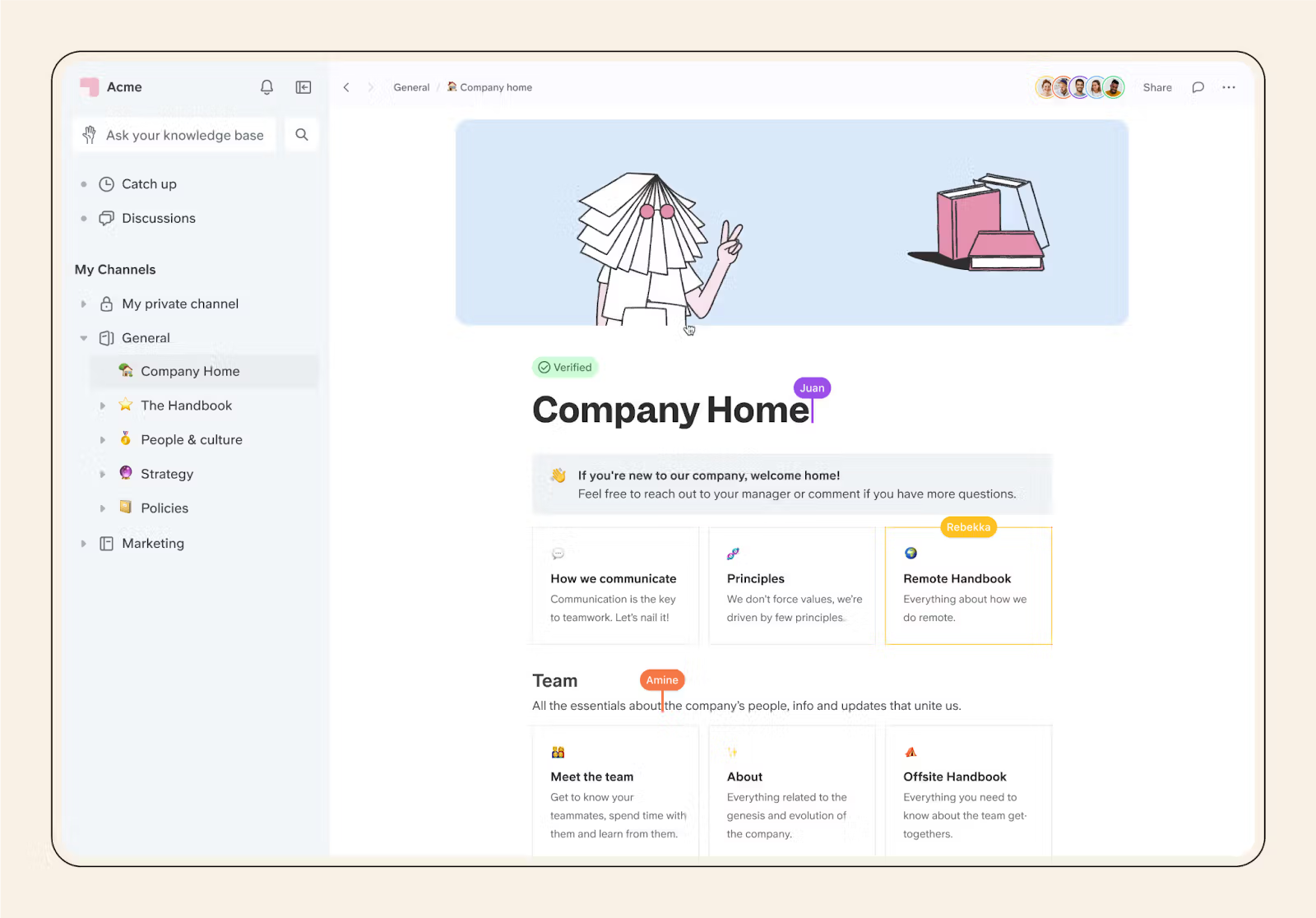Turning big ideas into real achievements doesn’t happen accidentally; it happens with a solid action plan. But let’s be honest; sitting down to write an action plan can feel like just another chore. You might think, "Why bother? Let’s just figure it out as we go." Tempting, sure. But that’s also how you miss deadlines, tasks pile up, and teams lose focus.
The best plans aren’t rigid checklists. They’re tools that keep everyone moving in the same direction while allowing for adjustments along the way.
This guide will show you how to build an action plan that keeps your team focused, productive, and ready for whatever comes next. Let’s get started.
What Makes a Great Action Plan?
Clarity
A great plan starts with clear, specific tasks. No vague "get this done" or "work on that." Every task should be actionable and directly tied to the goals you're working toward. The more specific you can get, the easier it'll be to tackle each task. It eliminates ambiguity, reduces misunderstandings, and helps everyone stay laser-focused on the end result.
Let’s take an example here. Tom, who runs marketing at Waystar Royco, wants to build brand awareness for the company’s newest product: Living Plus. Instead of simply telling his team, “Promote our new product,” he outlines specific tasks:
- Create three targeted social media campaigns
- Publish a weekly product-focused blog post
- Develop a compelling press release to distribute to industry media
Each item is specific, actionable, and leaves no room for guesswork. Tom’s team knows exactly what to do and why it matters, and everything relates back to their goal of boosting brand awareness.
Accountability
An action plan without accountability is like a map with no destination. “Who's in charge of what?” A great plan doesn't leave that question open for debate. Assigning owners to each task makes sure everyone knows their responsibilities, keeps everyone accountable, and makes checking in on progress easier. When there's ownership, there's motivation.
Tom splits the tasks among the marketing team:
- Kendall to oversee social media campaigns
- Roman to handle press outreach
- Logan to manage the blog content calendar
By specifying who owns each task, Tom can follow up with the right person when deadlines approach or if obstacles arise. Each team member feels responsible for their piece of the puzzle and knows their contributions matter.
Deadlines
Setting realistic and achievable deadlines for each task adds a sense of urgency and keeps things moving. Deadlines also help reduce procrastination, maintain momentum, and ensure that objectives are met on time without unnecessary delays.
Tom works with Kendall, Roman, and Logan to agree on deadlines:
- Social media campaigns scheduled to go live within the next two weeks
- Press release finalized and distributed by the first Friday of the month
- Weekly blog posts to begin publishing next Monday
Each deadline motivates the team to stay on track, and everyone knows exactly when their deliverables are due.
Flexibility
While deadlines and accountability are essential, flexibility is just as important. A plan shouldn't be rigid—it should be able to adapt as circumstances change. Business priorities shift, unexpected challenges pop up, and sometimes, the road to success isn't straight. A flexible action plan allows you to adjust without losing sight of your goal, ensuring progress even when things don't go as planned.
Visibility
An action plan isn't helpful if only a few people know what's happening. Everyone on the team should have complete visibility into the plan and where things stand. Whether tracking progress, updating tasks, or shifting priorities, visibility ensures no one's left in the dark. It keeps your team aligned, helps catch issues early, and creates a sense of shared ownership over the plan's success.
Tom can use a shared workspace with real-time collaboration with his team to see task status in real time. Each team member can quickly check how the social media campaigns are performing, view the latest draft of the press release, and see which blog posts are lined up next. The entire team has complete visibility, which helps them stay coordinated.
Building Your Action Plan in 6 Steps
1. Define Your Goal
Get super clear on what success looks like. What's the end result you're aiming for? The more specific you can be, the better. Your goal should follow the SMART criteria—Specific, Measurable, Achievable, Relevant, and Time-bound. Whether launching a product or hitting a sales target, defining your goal sets the foundation and gives your team a clear direction to follow.
Tom’s primary objective is to increase brand awareness for Waystar Royco’s newest product by 30% within one quarter. This goal is specific (brand awareness for a single product), measurable (30% increase), achievable (based on past campaigns), relevant (aligned with Waystar Royco’s business priorities), and time-bound (one quarter).
2. Break Down the Goal into Tasks
Big goals can be intimidating, but when you break them into smaller, actionable tasks, they're much easier to tackle. Breaking the goal down into bite-sized tasks creates a clear path to success. Each task should be achievable, measurable, and directly tied to the larger goal. This makes the entire process feel more doable and helps you spot potential roadblocks early.
Tom can break the overarching brand awareness goal into smaller milestones:
- Develop product messaging that resonates with target audiences
- Launch social media ads targeting key demographics
- Run email marketing campaigns to existing leads and customers
- Coordinate PR efforts with industry blogs and publications
By mapping these tasks, Tom creates a clear path to success and can address any roadblocks before they escalate.
3. Assign Responsibilities
When you delegate tasks and assign responsibility for each, you reduce confusion and ensure that nothing falls through the cracks. Ownership motivates individuals to follow through and stay focused on their objectives, knowing how their contributions fit into the larger plan.
4. Set Deadlines
Setting achievable deadlines for each task keeps things on track, avoids procrastination, and helps maintain momentum. Remember, deadlines should motivate, not overwhelm, so make them realistic!
5. Track Progress
Using project management tools for tracking updates allows teams to collaborate in real time and monitor the status of tasks. Regular tracking ensures the team remains aligned and the progress is visible to everyone.
6. Review and Adapt
Things don't always go according to plan, and that's okay. Regularly revisiting and adjusting your action plan ensures it stays relevant and aligned with your current goals. If circumstances change or unexpected challenges pop up, don't be afraid to tweak your plan to stay on track. Flexibility makes sure your plan keeps moving forward, no matter what.
Midway through the quarter, Tom noticed that social media engagement was outperforming initial targets, but the press outreach wasn’t generating the buzz they had hoped for. He decides to:
- Double down on the highest-performing social channels
- Rework the press release strategy by targeting more niche industry blogs
This adaptation lets Tom make data-driven decisions and keep the plan moving forward despite unexpected challenges.
Why Slite is Perfect for Action Planning
When it comes to creating and tracking action plans, just like Tom’s brand awareness initiative, Slite is your best option. It’s intuitive, collaborative, and designed to help teams stay organized without the headaches. Here’s how it can level up your action planning:
Easy collaboration and real-time editing
Slite’s real-time editing allows your entire team to collaborate, make updates, and track progress in one place. There will be no more endless email threads or confusing document versions.

Centralized Information
With Slite, everything from your action plan to progress updates lives in one organized knowledge base. You won’t waste time hunting for information; just conduct a quick search, and you’ll be ready to go.

Templates for Action Plans
Whether you’re launching a product, hitting quarterly goals, or tackling something completely new, Slite has you covered with templates tailored to action planning. For instance, Tom can use our marketing plan template to create the perfect action plan for his team.

Visibility and Transparency
In Slite, everyone can see where things stand and no longer have to wonder who’s doing what or when something is due. Easily track progress, spot bottlenecks, and keep the entire team aligned. For Tom’s marketing team at Waystar Royco, this means instant clarity on campaign statuses, content drafts, and PR timelines.

Find documents without wasting time
Instead of asking the whole team for the same ad creative or content asset for the 10th time, Tom can use our AskX feature to find it on Slack right away. This means he can find what he’s looking for in one click, without all the tab switching and scrolling through multiple conversations.

Plan Smarter with Slite
There you have it: creating an action plan doesn't have to be a snoozefest! You can turn even the biggest goals into manageable tasks with the proper structure and tools. Here's a quick recap of the key takeaways:
Clarity is Key: Be specific about your goals and tasks. No room for ambiguity!
Accountability Boosts Results: Assign clear responsibilities to keep everyone on track.
Deadlines save you from dead ends: Set realistic deadlines to maintain momentum and avoid procrastination.
Flexibility is Essential: Be ready to adapt as your goals or priorities shift.
Visibility = Transparency: Keep everyone on the same page to track progress and spot issues early.
When it comes to creating, tracking, and adjusting your action plan, Slite has you covered. With its collaborative features, easy-to-use templates, and real-time updates, Slite makes planning smoother, faster, and more efficient.

Want to see how Slite can help you plan smarter and crush your goals? Book a demo today and start making your action plans work for you!

